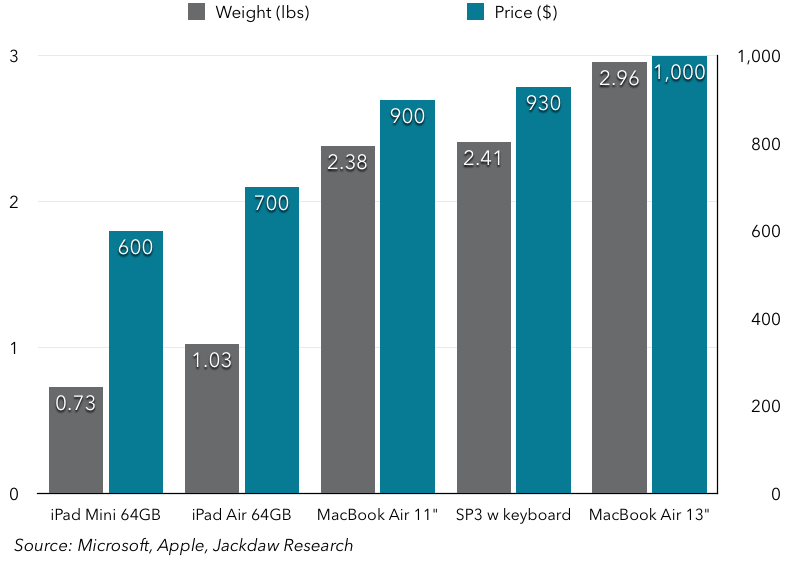Microsoft today announced the Surface Pro 3, its latest Windows 8-based tablet, with the tagline “The tablet that can replace your laptop”. That sounds great in principle, and it’s a great slogan, but the reality is that the Surface Pro 3, like any other device – be it smartphone, tablet, laptop or whatever – is a compromise. Microsoft’s biggest mistake in marketing the Surface – and Windows 8 – is its repeated claims that there is no compromise, or that the Surface can somehow meet needs normally served by a combination of tablets and laptops or desktops.
Satya Nadella provided the setup for the launch with talk about “dreaming the impossible” and creating a device which (I’m paraphrasing based on my notes) “enables any individual to be able to read, create and write. Allows you to watch a movie and make a movie. To enjoy art and create art.” To me, that sounded just like the reality of the iPad. There was nothing unique in this vision, nothing impossible about it – it’s a reality we’ve had with us for the last four years. But the point is, Apple has never claimed that professional moviemakers should be using the iPad camera for shooting movies or iPad apps to edit them. Apple knows better than anyone that professionals want professional-grade equipment and software (including Apple’s own Mac Pro and Final Cut Pro products) to make movies. And the same goes for many other professions. The iPad offers great benefits – smaller, lighter, longer battery life, more personal and interactive – over laptops and desktops. But the tradeoff is that it lacks the power, the large screen, the peripherals and so on of a larger device. Apple will happily sell you a device from five different major product lines: the iPhone, the iPad, the MacBook Air, the MacBook Pro and the Mac Pro – because it knows no single device meets all needs, and doesn’t try to convince consumers that it can.
The problem for Microsoft is that it only makes one device, the Surface, itself. And so its mission from the start has been to turn that device into the holy grail – the single device that can meet all your needs, replacing both other tablets and laptops. It has good strategic reasons for wanting to do this, which I’ve covered elsewhere. But the result is that it has to constantly claim that its single device can replace two devices from any other vendor, notably the MacBook Air and iPad shown repeatedly at today’s launch event. But it fails to acknowledge the compromises such an approach entails. Though Panos Panay repeatedly compared the Surface Pro 3 to the 13″ MacBook Air, he never compared it to the iPad Air or even the 11″ MacBook Air, which has a much more comparable size. Here’s why:
It’s because Microsoft recognizes that this isn’t really a tablet that can replace your laptop: it’s a laptop that happens to have a detachable keyboard. It’s priced like a premium laptop, and it weighs the same as a premium laptop.Start comparing it to the best tablet on the market, though, and it starts to look much less attractive: the iPad Air and iPad Mini cost substantially less (even if you add a good third party keyboard for $100), and weigh much less. They’re much easier to hold in the hand and they come with a far greater number of tablet-optimized apps.
The biggest change in Microsoft’s Surface strategy over the last several years has been the locus of the compromise it’s still inevitably making. The first Surfaces were intended to be good tablets first and good laptops second (and ended up being neither). But with the Surface Pro 3, Microsoft has created a competitive laptop first, and a compromised tablet second. But it’s still pretending that there’s no compromise, and that is why the Surface line will continue to perform poorly. At some point, Microsoft has to stop pretending that a single device can meet all needs and start optimizing for different use cases with different devices, just like every other manufacturer. If it isn’t willing to do that, it should probably just cede the market to its OEMs.
